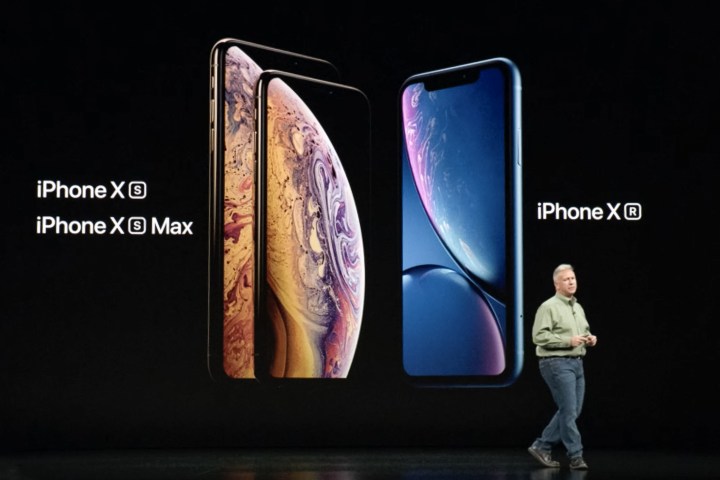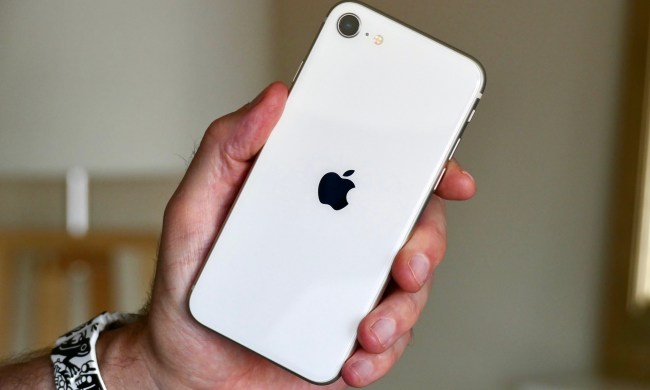
Apple has lost its way. It has become confused, unsure of what to do for the best, and it all comes down to an odd lack of planning. A lack of foresight even. No, we’re not talking about the new iPhone models — which we’re excited about getting our hands on — but the new nomenclature Apple has chosen.
It is, by far, the worst collection of letters arranged in some semblance of order we’ve seen in a while.
Naming excess
This year’s iPhone model range is called the iPhone XR, the iPhone XS, and the iPhone XS Max. None of this makes much sense. The biggest problem is that according to Apple, the iPhone X was the iPhone 10 — it’s a Roman numeral, see — because it was released in the same year as the iPhone’s 10th anniversary. That anniversary has passed, so why are we still celebrating it?

It was hard enough to keep from calling the damn thing the iPhone Eks before, and now we’ve got two new phones with names that when read by any normal person will be the iPhone Excess, and Excess Max. Not the iPhone 10 S. Ever. Why? Because there’s a big X in front of the S. If you want it to be called the 10, Apple, it needs to feature the number 10 in the name, exactly as you did with versions three-to-eight.
If a naming structure is going to be based on ascending numbers, let’s try to keep it in some kind of logical order, OK?
Now, we also have another point of confusion. Why Max instead of Plus? Plus has been the name-of-choice for the bigger iPhone since the iPhone 6. It’s well-established, people understand the difference between it and the regular phone, and it’s written properly instead of using a + sign. Why change it? Especially to a word that’s not only an informal abbreviation, and therefore cheaper sounding, but also less meaningful to the brand than Plus. What’s more, we’re all so indoctrinated that the bigger iPhone will inevitably be referred to as the iPhone XS Plus anyway.
We thought you cared about brand recognition and reputation, Apple?
What about nine, and two?
Yes, we get that Apple has previously followed up a new model with an S model revision a year later, and that the XS fits into this pattern. Except there is no pattern anymore. Did you like the iPhone 9? How about the iPhone 2? Apple forgot all about these phones, and has merrily skipped past them both. If a naming structure is going to be based on ascending numbers, let’s try to keep it in some kind of logical order, OK?

The iPhone XR is even worse. Apple’s low-cost iPhone has always suffered with a stupid name anyway. The iPhone SE’s name is meaningless, so we’re glad it has gone away, but sadly it has been replaced by the iPhone XR, which bears no relation to the older iPhone 5C, and forgets all about the SE model it actually replaces entirely. Where did the R come from, all of a sudden?
Anyway, let’s recap. The new iPhone XS may be colloquially called both the iPhone 10S and the iPhone Excess, and iPhone XS Max may get referred to as the iPhone 10S Plus, or Excess Plus, or even Eks S Max, if we remember. Finally, the iPhone XR may actually stay safe, as it’s the only one without any history at all, except is it the 10R or the Eks R? Who knows, it’s all too confusing.
Apple can get it right
The main issue with the iPhone range’s names is that they’re too complicated. It’s not like Apple has some kind of decent-name-blindness either. Look at the Apple Watch. It’s simply called the Apple Watch, and the only way to know the difference is by series name. That’s how car manufacturers approach things. The BMW 3-Series, for example, has had the same basic name for decades.

Car geeks learn to differentiate models using the lesser known names; but to regular people, these don’t matter. It’s a 3-Series, just like it’s an Apple Watch. We don’t need an Apple Watch S, or an Apple Watch RS Max Turbo. We know what it is, everyone calls it the same thing, and everyone remembers the name without furrowing their brow trying to recall the right way to say it.
Does it matter?
Yes, names matter a lot, and Apple knows it. It understands names must be memorable, that’s why Steve Jobs introduced the iPhone, a product to go along with the iMac, the iPod, and in later years the iPad. It’s also why the iPhone name is often used by marketing companies explaining how to name products. It’s product naming gold.

This marketing company singles it out in its advice on the subject, but Apple should have paid attention to the other tips the list contains, including making a name easy to spell, pronounce, and remember. Tech marketing company New Kind also advises against complicated names, and dissects how Tesla should move forward with its own, similar, naming issues.
What’s the solution?
Apple has teams of marketing professionals working on these names, and we have no doubt they know exactly what they’re doing, but this seems like a missed opportunity to start with a clean slate. The iPhone 8 and iPhone X should have signified the end of random numbers and letters being applied to the new iPhone models.
We already say the solution to all this in normal conversation anyway. When someone asks you, “What phone do you have,” the general reply is to say, “An iPhone,” without going into much further detail unless quizzed about it. Everything most people want to know is relayed here.
2018 should have introduced the iPhone, and the iPhone Plus (or Max, if it really has to be), along with the iPhone Lite, iPhone Minus, or iPhone Min. The cheap one is hard to name, so that’s where the marketers can earn their money. Note: Throwing letters and numbers at it is not the answer.
Apple should be exploiting to the power of the iPhone brand name to max (Plus?); rather than diluting it with pointless, illogical, and incomprehensible additional letters.



